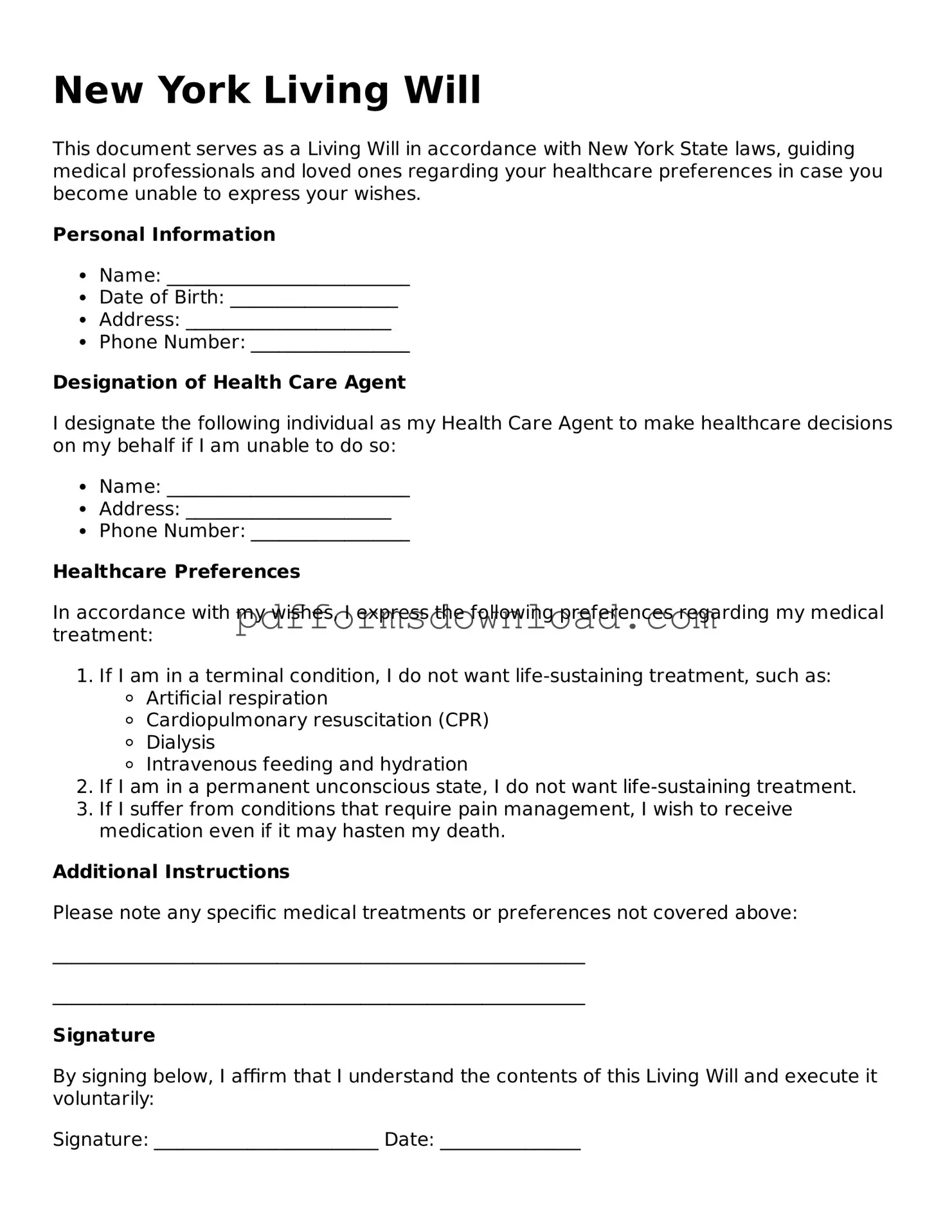What is a Living Will in New York?
A Living Will is a legal document that outlines your preferences for medical treatment in the event you become unable to communicate your wishes. It specifies what types of life-sustaining treatments you want or do not want, such as resuscitation, mechanical ventilation, or feeding tubes. This document helps guide healthcare providers and your loved ones in making decisions that align with your values and desires.
Who can create a Living Will in New York?
Any adult who is at least 18 years old and is of sound mind can create a Living Will in New York. This includes individuals who are capable of understanding the nature and consequences of their decisions regarding medical treatment. It is important to ensure that the document accurately reflects your wishes.
How do I create a Living Will in New York?
To create a Living Will in New York, you can use a standard form available online or consult an attorney for assistance. You must clearly state your medical preferences and sign the document. While it is not required, having witnesses or notarization can add an extra layer of validity. Once completed, keep the document in a safe place and provide copies to your healthcare proxy, family members, and medical providers.
Can I change or revoke my Living Will?
Yes, you can change or revoke your Living Will at any time as long as you are competent to make decisions. To revoke the document, simply destroy it or create a new Living Will that states your updated wishes. It is advisable to inform your healthcare proxy and any medical providers of the changes to ensure they have the most current information.
What happens if I do not have a Living Will?
If you do not have a Living Will and become incapacitated, your healthcare decisions may be made by your family members or a court-appointed guardian. This can lead to confusion and disagreements among loved ones about your treatment preferences. Having a Living Will provides clarity and ensures that your wishes are respected.
Is a Living Will the same as a healthcare proxy?
No, a Living Will and a healthcare proxy serve different purposes. A Living Will specifies your medical treatment preferences, while a healthcare proxy designates someone to make healthcare decisions on your behalf if you are unable to do so. You can have both documents in place to ensure comprehensive coverage of your healthcare wishes.
